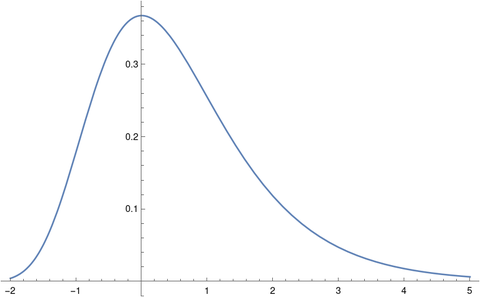A couple weeks ago I wrote about how H. A. Rey introduced a new way of looking at the constellations, making them look more like their names. That post used Leo as an example. This post looks at Boötes (The Herdsman) [1].
Here is the constellation using the connections indicated in the IAU star chart.
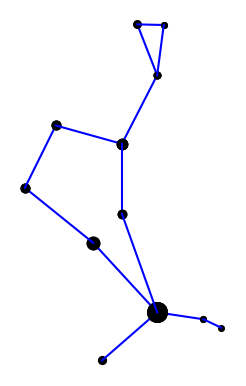
Here is the constellation using the connections drawn in Rey’s book [2].
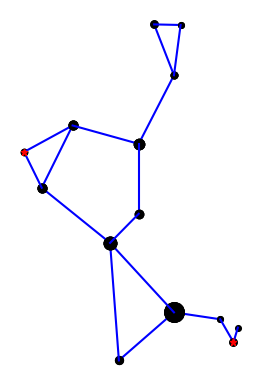
Rey’s version adds two stars, highlighted in red, but mostly connects the same stars in a different way. I suppose the herdsman is standing in the IAU version; it’s hard to tell. In Rey’s version, the huntsman is clearly seated and smoking a pipe. This is easier to see if we rotate the image a bit.
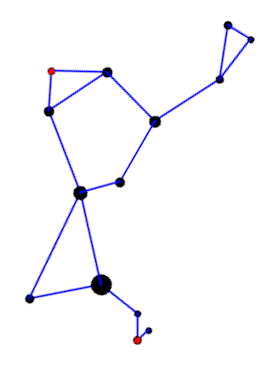
Here’s a comparison of the two interpretations side-by-side.
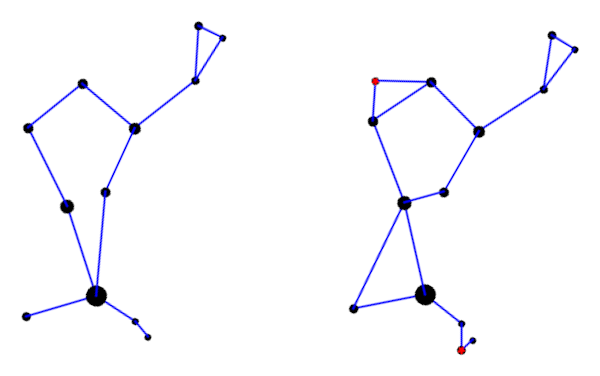
Here is the Python code that produced the two images. It’s a little cleaner than the code in the earlier post, and it draws larger dots to represent brighter stars.
import matplotlib.pyplot as plt
# data from https://en.wikipedia.org/wiki/List_of_stars_in_Bo%C3%B6tes
α = (14 + 16/60, 19 + 11/60, 0.0)
β = (15 + 2/60, 40 + 23/60, 3.5)
γ = (14 + 32/60, 38 + 18/60, 3.0)
δ = (15 + 16/60, 33 + 19/60, 3.5)
ε = (14 + 45/60, 27 + 4/60, 2.3)
ζ = (14 + 41/60, 13 + 44/60, 3.8)
η = (13 + 55/60, 18 + 24/60, 4.5)
θ = (14 + 25/60, 51 + 51/60, 4.0)
κ = (14 + 13/60, 51 + 47/60, 4.5)
λ = (14 + 16/60, 46 + 5/60, 4.2)
μ = (15 + 24/60, 37 + 23/60, 4.3)
υ = (13 + 49/60, 15 + 48/60, 4.0)
τ = (13 + 47/60, 17 + 27/60, 4.5)
ρ = (14 + 32/60, 30 + 22/60, 3.6)
k = -15 # reverse and scale horizontal axis
def plot_star(s, m):
plt.plot(k*s[0], s[1], m, markersize=14-2.2*s[2])
def join(s0, s1, m='ko'):
plot_star(s0, m)
plot_star(s1, m)
plt.plot([k*s0[0], k*s1[0]], [s0[1], s1[1]], 'b-')
def draw_iau():
join(α, η)
join(η, τ)
join(α, ζ)
join(α, ϵ)
join(ϵ, δ)
join(δ, β)
join(β, γ)
join(γ, λ)
join(λ, θ)
join(θ, κ)
join(κ, λ)
join(γ, ρ)
join(ρ, α)
def draw_rey():
join(α, η)
join(η, υ)
join(υ, τ)
join(α, ζ)
join(α, ϵ)
join(ζ, ϵ)
join(ϵ, δ)
join(δ, β)
join(δ, μ)
join(μ, β)
join(β, γ)
join(γ, λ)
join(λ, θ)
join(θ, κ)
join(κ, λ)
join(γ, ρ)
join(ρ, ϵ)
plot_star(μ, 'r*')
plot_star(υ, 'r*')
return
draw_iau()
plt.gca().set_aspect('equal')
plt.axis('off')
plt.savefig("bootes_iau.png")
plt.close()
draw_rey()
plt.gca().set_aspect('equal')
plt.axis('off')
plt.savefig("bootes_rey.png")
plt.close()
***
[1] The diaeresis over the second ‘o’ in Boötes means the two vowels are to be pronounced separately: bo-OH-tes. You may have seen the same pattern in Laocoön or oogenesis. The latter is written without a diaeresis now, but I bet authors used to write it with a diaeresis on the second ‘o’.
[2] H. A. Rey. The Stars: A New Way to See Them, Second Edition.






